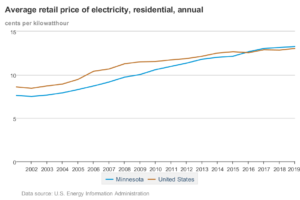
For what reason does Texas have its own electric network
Texas’ secessionist tendencies have something like one current outlet: the electric framework. There are three frameworks in the Lower 48 states: the Eastern Interconnection, the Western Interconnection — and Texas. The Texas matrix is called ERCOT, and it is controlled by an organization of a similar name — the Reliant Energy Council of Texas. ERCOT doesn’t really cover all of Texas. El Paso is on another lattice, just like the upper Panhandle and a piece of East Texas. This apparently has to do with the historical backdrop of different utilities’ administration regions and the distance of the non-ERCOT areas (for instance the Panhandle is nearer to Kansas than to Dallas, notes Kenneth Starcher of the Alternative Energy Institute in Canyon), yet Texplainer is as yet sorting out the specifics on this.

The division of the Texas framework from the remainder of the nation has its starting points in the advancement of electric utilities in the early last 100 years. In the long time after Thomas Edison turned on the nation’s most memorable power plant in Manhattan in 1882, little creating plants grew across Texas, carrying electric light to urban communities. Afterward, especially during WWI, utilities started to interface themselves together. These ties, and the going with transmission organization, became further during WWII when a few Texas utilities combined to shape the Texas Interconnected System, which permitted them to connect to the large dams along Texas waterways and furthermore sends additional power to help the inclined up industrial facilities supporting the conflict exertion.
The Texas Interconnected System
- For quite a while was really worked by two discrete elements, one for northern Texas and one for southern Texas — had another need: avoiding the span of government controllers. In 1935, President Franklin D. Roosevelt marked the Federal Power Act, which charged the Federal Power Commission with administering highway power deals. By not crossing state lines, Texas utilities tried not to be exposed to government rules.
- “Independence from government guideline was a treasured objective — all the more so in light of the fact that Texas had no guideline until the 1970s,” composes Richard D. Cudahy in a 1995 article, “The Second Battle of the Alamo: The Midnight Connection.” (Self-dependence was likewise made more straightforward in Texas, particularly in the good ‘ole days, on the grounds that the state has significant coal, gaseous petrol, and oil assets of its own to fuel power plants.)
- ERCOT was framed in 1970, directly following a significant power outage in the Northeast in November 1965, and it was entrusted with overseeing lattice unwavering quality as per public guidelines. The office took on extra obligations following electric liberation in Texas 10 years prior. The ERCOT network stays past the purview of the Federal Energy Regulatory Commission, which succeeded the Federal Power Commission and manages highway electric transmission.
- By and large, the Texas matrix’s freedom has been disregarded a couple of times. Used to be during World War II, when exceptional arrangements were made to interface Texas to different lattices, as indicated by Cudahy. One more episode happened in 1976 after a Texas utility, because of reasons connecting with its own administrative requirements, purposely flipped a switch and sent capacity to Oklahoma for a couple of hours. This occasion, known as the “12 PM Connection,” set off a significant fight in court that might have brought Texas under the purview of government controllers, yet it was at last settled for proceeded with Texan freedom.




